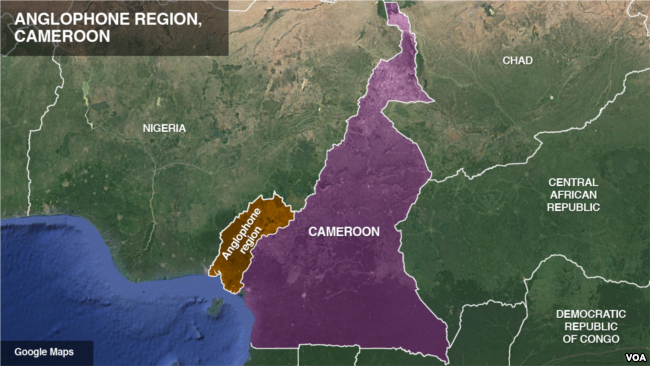Cameroon: a diverse country in central Africa
Diverse and football-mad Cameroon is Central Africa’s biggest economy but troubled by mounting unrest in its disgruntled English-speaking regions, where there is a push to break away.
Here is some background about the mainly francophone country ahead of October 7 elections in which President Paul Biya — the second-longest serving leader in Africa — is seeking a seventh term.
– ‘Africa in miniature’ –
The Atlantic Ocean nation, which sits just above the Equator, has this nickname because its many ethnic groups and diverse geographic and climatic zones are said to make it representative of the continent.
At the end of World War I, the German protectorate of Kamerun split into French- and British-mandated regions. The French section became independent as Cameroon in 1960 and was later joined by a part of the British area, the remainder of which chose to unite with Nigeria.
The country’s name comes from that of one of its main rivers, which 15th century Portuguese explorers called the Rio dos Camaroes, or River of Prawns, and is today the Wouri.
Francophones are in a majority while anglophones represent around a fifth of its more than 23 million people.
The population is young: three-quarters were aged less than 25 in 2014, according to a census that year.
– Biya, 36 years at the top –
In 1982 Cameroon’s ailing founding president, Ahmadou Ahidjo, stepped down in favour of his prime minister, Paul Biya. Nearly 36 years later, Biya is still in the job.
Aged in his mid-80s, he has a reputation for being tightly in control behind a smooth and discreet exterior.
He was able to extend his rule via a controversial 2008 constitutional revision that did away with limits on the number of terms a president can serve.
In Africa only Equatorial Guinea’s Teodoro Obiang Nguema has been in power for longer, since 1979.
– Anglophones seek secession –
Cameroon’s English-speaking Northwest Region and Southwest Region have been in deep crisis since late 2016 as a secessionist movement pushes for independence.
It started with demonstrations, encouraged by English-speaking lawyers and teachers, to protest against perceived discrimination by the francophone majority.
Clashes between troops and separatists take place on an almost daily basis and have led to dozens of deaths and the displacement of nearly 200,000 people.
In October 2017 separatist leaders issued a symbolic declaration of independence for a new republic called “Ambazonia”.
Cameroon has also been confronted since 2009 with attacks in the far north by jihadists from Nigeria’s Boko Haram, but these have diminished over the past months.
– Economy diverse, too –
Cameroon has abundant commodities like oil, high value timber, minerals, coffee, cotton, cocoa and cassava.
It is the largest economy in the six-nation Central African Economic and Monetary Community (CEMAC).
In 2017 growth slowed to around 3.7 percent, due to the maturity of the main oil fields and to an avian flu epidemic, according to the World Bank.
It is expected to pick up in 2018 with new gasfields in operation and construction for its hosting of the 2019 Africa Cup of Nations.
Poverty is however rising, including because of rapid population growth, climbing by 12 percent between 2007 and 2014 to affect 8.1 million people, according to the World Bank.
Only one in 10 of the working population has an official job and a third of inhabitants live on less than two euros a day.
China is its biggest trading partner and foreign investor.
– Football felines –
Football is a near religion in Cameroon with the national team, Les Lions Indomptables (The Indomitable Lions), considered among the best on the continent and winning the Africa Cup of Nations five times, including in 2017.
However its hosting of the 2019 tournament is in doubt because of delays in infrastructure construction, with a final decision due in November.
AFP





